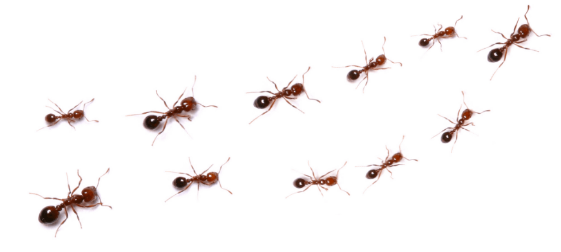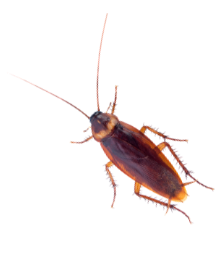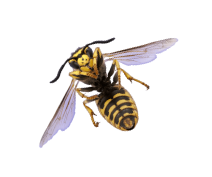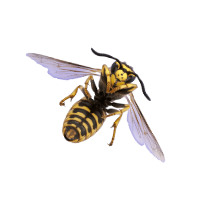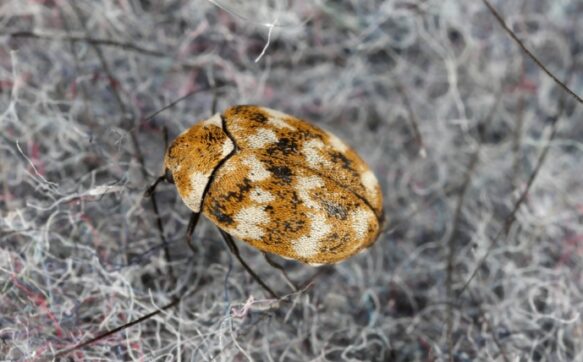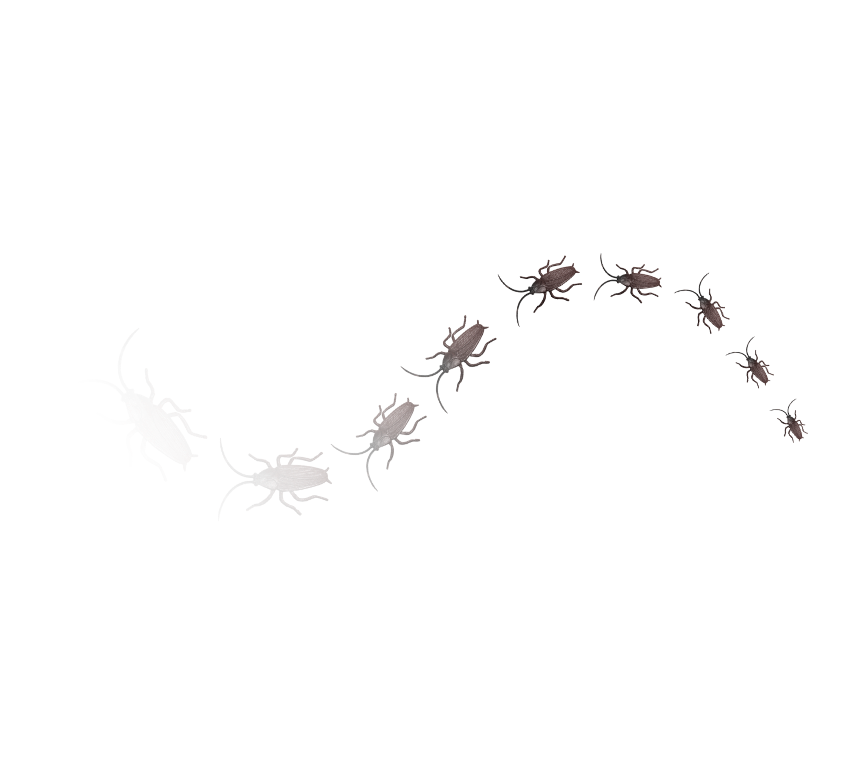
Their legs and head are not obvious and are often hidden under the body.
The variegated Carpet Beetle (Anthrenus verbasci) and furniture Carpet Beetle (Anthrenus flavipes) are 2-3 millimetres long and mottled yellow, white and black.
The black Carpet Beetle (Attagenus unicolor) is larger, ranging from 3-5 millimetres, more elongate and black with brownish legs.
The Australian carpet beetle (Anthrenocerus australis) is 2-3 millimetres long and dark with light markings.
Of the four species of Carpet Beetle, only the Australian Carpet Beetle is native.
Carpet Beetle larvae move slowly and are 4-7 millimetres long, depending on the species.
They are brown in colour and covered in bristles. As the larvae grow they moult, leaving cast brown skins.
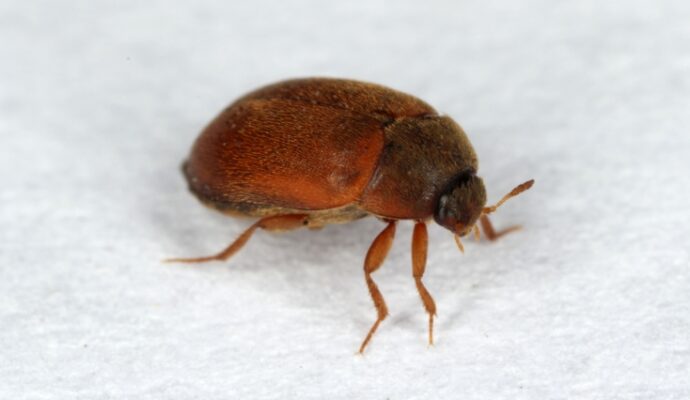
Life History
Carpet beetles are widely distributed and can be found inside homes and other buildings where food is available.
Adult carpet beetles lay eggs near food sources and larvae feed, often for more than six months, on the surface or inside the material.
After a pupal period of typically two to three weeks, the adult beetles emerge in spring or summer.
Adult carpet beetles feed on nectar or pollen and the larvae feed on animal products.
Adult Anthrenus feed outdoors on nectar and pollen, and are sometimes found on the inside of windows as they try to fly outside.
The complete life cycle of the carpet beetle takes nine to twelve months.
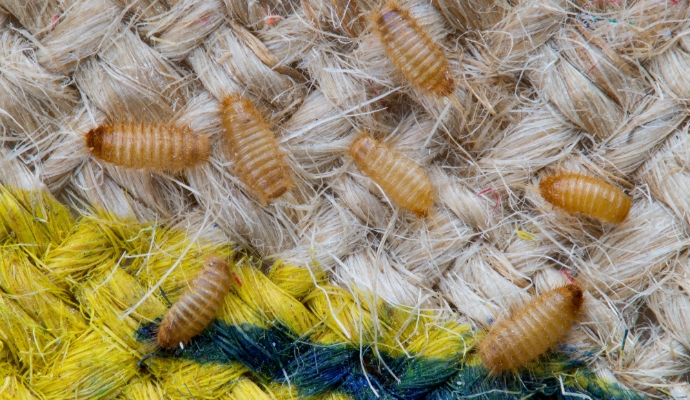
Pest Status and Management
Carpet beetle larvae feed on dry materials of animal origin such as:
- Wool
- Fur
- Silk
- Felt
- Dried meat
- Carcasses
Variegated and black carpet beetles are the most widespread and damaging species, although the others can be locally destructive.
- Carpets
- Rugs
- Underfelt
- Wall hangings
- Clothing
- Wool insulation
- Insect collections
If an infested article is transportable, remove and disinfest by heat or cold treatment. Leave it in the sun wrapped in black plastic, or deep-freeze it for two weeks.
Preventive measures are important.
Vacuum carpets, rugs, soft furnishings and upholstery frequently and thoroughly.
Pay particular attention to low-traffic areas of carpets such as edges and under furniture.
Washing and steam-cleaning where appropriate, is effective.
When susceptible clothes will be unused for an extended period (for example, woollens over summer) clean them well and store in sealed plastic bags.
Possible obscure sources of infestation should be identified and either removed or disinfested.
Carpet beetle may frequently damage:
These include:
- Ceiling or pipe insulation
- Animal carcasses
- Birds’ nests
- Pet bedding
